BY SARAH YOST
SDR Product Manager
National Instruments
www.ni.com
The next generation of wireless communications, known as “5G,” will bring new services to both mobile and fixed-location users. It will also reduce latency, make better use of spectrum, and let more users use networks. Over the last several years, researchers have been exploring new concepts and technologies that will define 5G. New technologies will likely include new radios, frequencies, and the ability to direct signals at users. These new technologies will bring with them new test procedures.
The 3rd Generation Partnership Project (3GPP) is the standards body that publishes specifications that define wireless communications. 3GPP has outlined a timeline for 5G, and the deadline for a definition of the first phase of 5G, called New Radio (NR), is rapidly approaching in December 2017. Fig. 1 shows a timeline for NR development.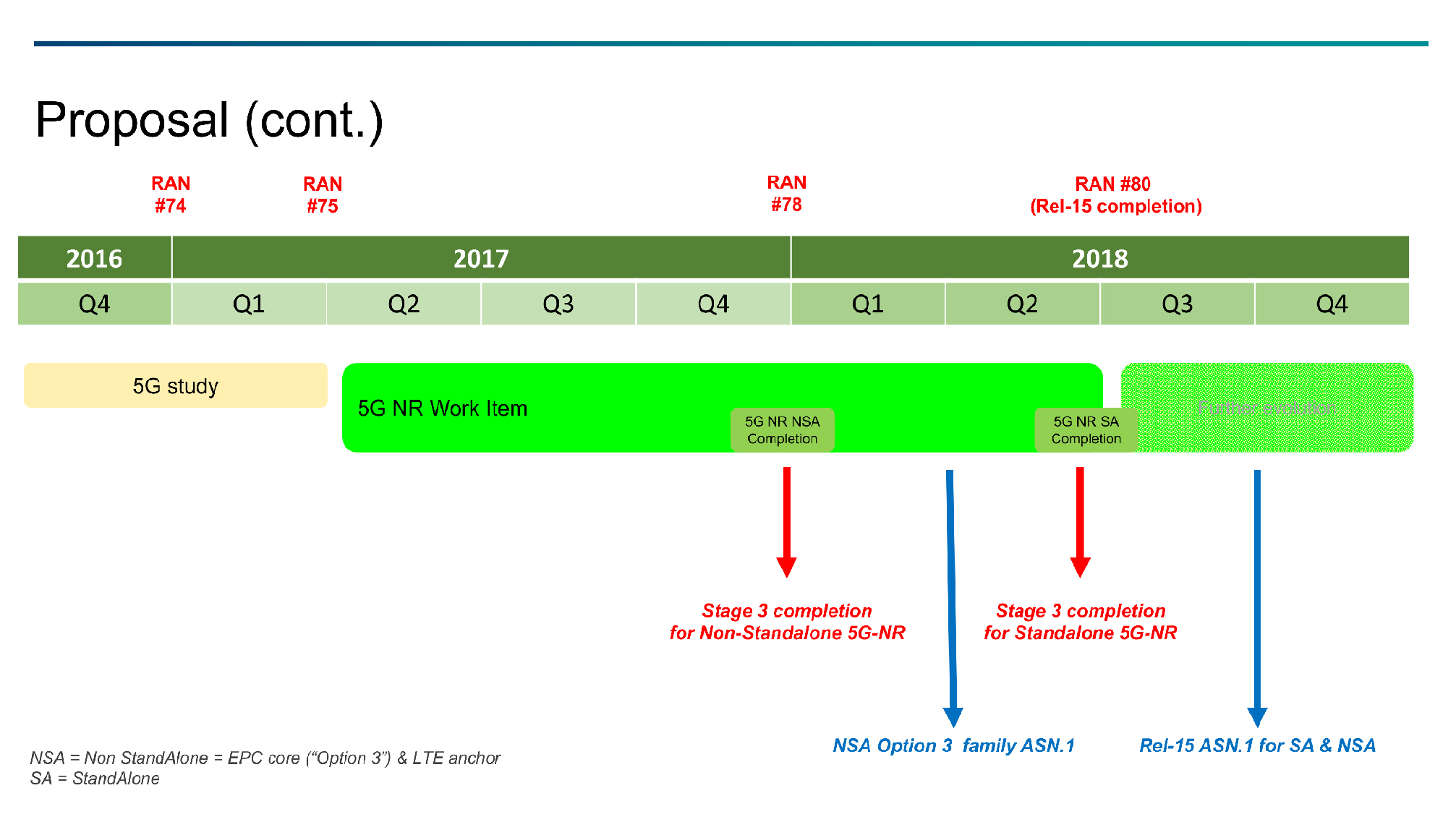 Fig. 1: The first specification of the New Radio technology for 5G is scheduled for release in late 2017, with further updates through 2018. Image: 3GPP.
Fig. 1: The first specification of the New Radio technology for 5G is scheduled for release in late 2017, with further updates through 2018. Image: 3GPP.
Although NR Phase 1 will introduce new communications protocols that differ from the LTE protocol commonly used in today’s mobile communications, there will be some similarities. The most stark differences between LTE and NR are the carrier bandwidth and operating frequency. NR will add beamforming capabilities — both in the analog and digital domains. Table 1 illustrates a side-by-side comparison of key specifications for LTE and NR.
Table 1: LTE vs. 5G capabilities. 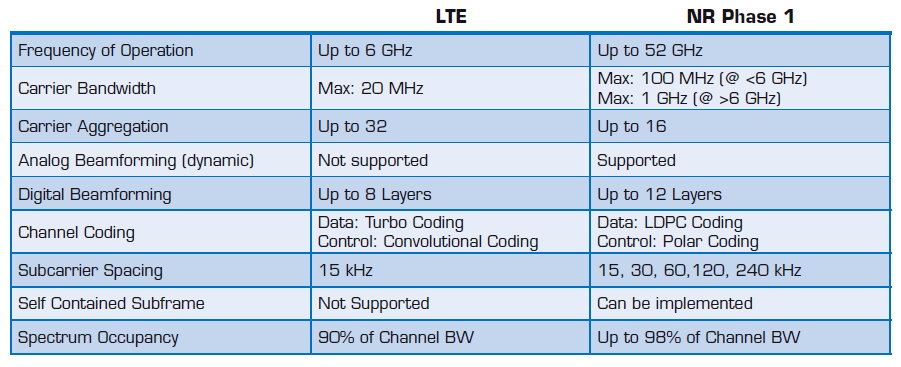 To meet timelines, 3GPP has developed a phasing plan that consists of two NR versions: a standalone version and a non-standalone version. The non-standalone version (Fig. 2 ) will operate with the LTE Enhanced Node B (EnodeB or eNB, the radio-access part of LTE) as the master and a secondary cell of NR gNBs (gNB is eNB for 5G new radio) that are connected to the Evolved Packet Core (EPC).
To meet timelines, 3GPP has developed a phasing plan that consists of two NR versions: a standalone version and a non-standalone version. The non-standalone version (Fig. 2 ) will operate with the LTE Enhanced Node B (EnodeB or eNB, the radio-access part of LTE) as the master and a secondary cell of NR gNBs (gNB is eNB for 5G new radio) that are connected to the Evolved Packet Core (EPC).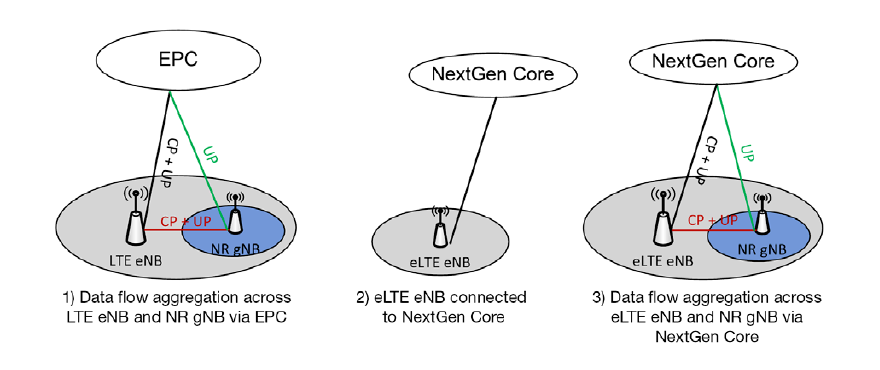 Fig. 2: A non-standalone version of 5G shows data-flow aggregation across LTE eNB. Image: 3GPP.
Fig. 2: A non-standalone version of 5G shows data-flow aggregation across LTE eNB. Image: 3GPP.
The non-standalone version can take advantage of existing infrastructure during initial deployments. A standalone version also exists and should be forward-compatible for future generations of wireless standards. Standalone networks can co-exist with non-standalone networks and operate simultaneously. An exact rollout date for standalone technology hasn’t yet been set, but its use case that’s being taken into account is in the NR Phase 1 design. Fig. 3 shows the standalone case.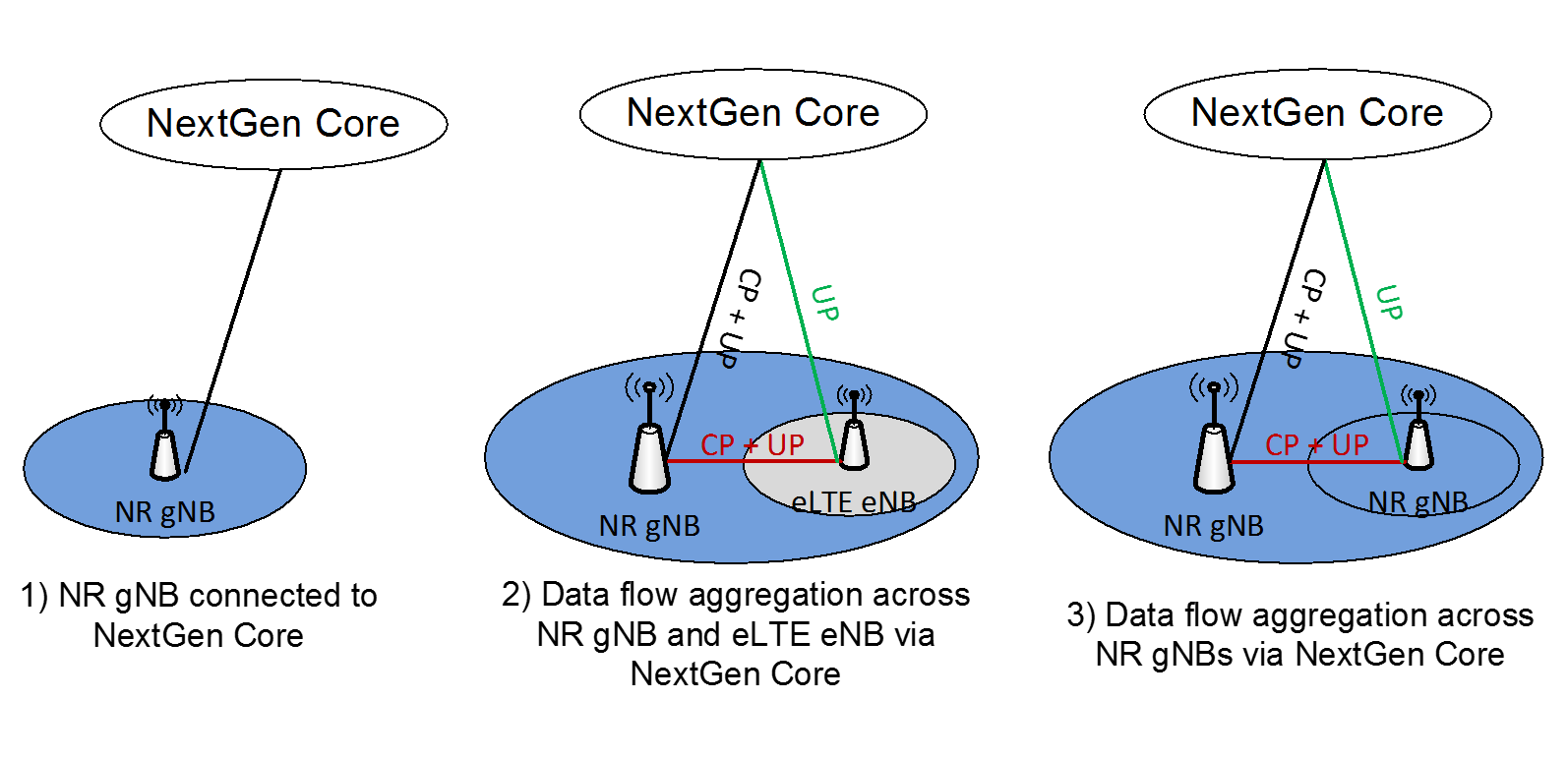 Fig. 3: The standalone version of 5G new radio can connect to the NextGen Core either from an enhanced LTE (eLTE) eNB (left) or in combination with a New Radio gNB (right). Image: 3GPP.
Fig. 3: The standalone version of 5G new radio can connect to the NextGen Core either from an enhanced LTE (eLTE) eNB (left) or in combination with a New Radio gNB (right). Image: 3GPP.
Verizon and Korea Telecom (KT) are looking to commercialize pre-5G technologies. Verizon plans to deploy fixed wireless access based on the 5G Technical Forum (Verizon 5GTF or V5GTF) physical layer as early as winter 2017. V5GTF will operate at 28 GHz as a way to deliver high-speed internet in “last-mile” applications but won’t cover the mobile use. KT is looking to deploy pre-5G technology for the 2018 Winter Olympics. Specifics of their deployments have not been publicly disclosed.
Operating frequency has been a widely discussed and debated topic for 5G, and clarity is starting to emerge. Table 2 summarizes the frequencies under consideration.
Table 2: Proposed millimeter-wave frequency bands for 5G. 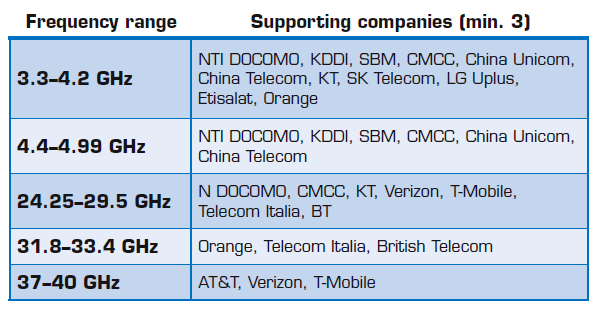 Although 5G adds millimeter-wave (mmWave) frequencies, the traditional sub-6-GHz frequencies will still play an important role. We could see bandwidths up to five times what is currently available in LTE. The frequencies listed in Table 2 represent a majority of the frequencies being considered, but it’s not a comprehensive list. For example, T-Mobile is planning to use a spectrum around 600 MHz in the U.S. for 5G deployment.
Although 5G adds millimeter-wave (mmWave) frequencies, the traditional sub-6-GHz frequencies will still play an important role. We could see bandwidths up to five times what is currently available in LTE. The frequencies listed in Table 2 represent a majority of the frequencies being considered, but it’s not a comprehensive list. For example, T-Mobile is planning to use a spectrum around 600 MHz in the U.S. for 5G deployment.
While mmWave frequencies for the first phase of NR are defined, there will still be a need for multiple bands, depending on region. For instance, Chinese regulatory bodies have proposed 24.75–27.5 GHz and 37–42.5 GHz. The FCC in the U.S. has proposed 28 GHz and two bands covering 37–40 GHz. The EU has specifically stated that 28 GHz won’t work. Frequencies 24–27 GHz, plus 38 GHz and 39 GHz, are under consideration. Korea and Japan also plan to use 28 GHz.
Having a better idea of what the standard will look like is a good first step to understanding the commercialization of 5G, but there are also a number of other challenges in both component and system design as well as device validation and test that may impact the speed of deployment of these new technologies. The addition of technologies such as beamforming requires changes in the design RFIC, including power amplifier and transceiver ICs. To minimize system loss, antenna arrays are being integrated into the same chip or module as amplifiers and transceivers. Thus, engineers can no longer test these devices with traditional cabled test methodologies. Instead, over-the-air testing, which was once taboo, is becoming mandatory.
NRs for 5G, especially for mmWave, are significantly more complex than LTE radios. Much of the existing test equipment can’t handle the combination of higher carrier frequencies, wider bandwidths, and over-the-air measurements. Indeed, even the simplest measurement tasks such as taking an RF power measurement must be rethought for 5G because the definition of what it means to take calibrated over-the-air measurement is not clearly defined as of now.
While the standardization process of protocol layers 1 and 2 is rapidly coming to a close, there are still numerous challenges that remain to be solved. Thus far, 5G has opened a new era in wireless communications and it’s clear that this is just the beginning. Now it’s time for RFIC design and the test and measurement industry to take what we’ve learned from wireless researchers and develop the technologies needed to bring 5G to market.
Advertisement
Learn more about National Instruments





